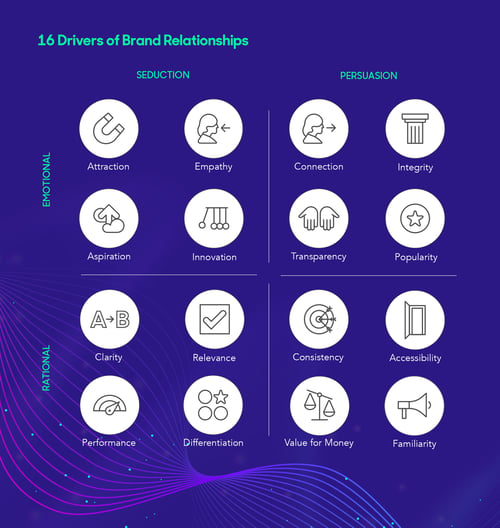Posted on March 17, 2021
Updated on March 13, 2023
4 min read time

If you only had 5 minutes with a retailer, how would you get them to bite?
When you’re with a buyer, every second counts. They see hundreds of portfolios every day, so yours needs to stand out. The key to success is perfecting your elevator pitch, your sub-5-minute presentation, selling yourself, your product and your brand.
A well-communicated elevator pitch is the crucial ingredient needed to gain a retailer’s trust. Keep it compelling, quick and persuasive to be in with a shot.
We’ve outlined 5 steps below to help you craft a killer elevator pitch.

A common mistake brands make when meeting with retailers is to oversell. It’s important to show passion for your company and product, but don’t assume every retailer will be interested in what you are selling from the offset. You have to tease out their interest by showing what’s in it for them.
Start out by identifying the pain points your product addresses. Make these relatable, understandable and closely tied to the buyer’s goals.
To reel a retailer in, make sure to look into the dynamics of the category and identify areas in need of attention or improvement. Your product should provide a clear solution to current problems affecting the category.
Consider:
When meeting with a retailer, you must reassure them your product will not only drive trial but will also grow their category through repeat purchases. A repeat purchase is determined through the strength of a brand’s relationship with its consumers.
At ProQuo, we have proven there are 16 Drivers that make up a brand’s relationship with people. Understanding how you and your competition perform across these Drivers will help guide where you need to focus to step ahead.
Use them in your pitch to demonstrate to a buyer how you understand the complex needs and wants of their category.
Start by explaining which Drivers hold the most importance for customers in the category. These Drivers should be thought of as basic hygiene factors, which every brand needs to meet if they wish to compete for space in the market.
It’s important to understand consumer needs across the category will vary. To best address these needs, split your data up across segments. This will ensure your data is applicable to different groups of consumers. Slicing and dicing your data will help you prove your case to a retailer, showing you understand where the value lies within their category.

You’ve identified what’s driving the category. Now it’s time to give the buyer the solution, your product.
When communicating your value, focus on:
Try not to talk too much about yourself and instead focus on how your brand will add value to the category, enabling it to grow.
When trying to disrupt, look at existing players in the category. Revert back to the 16 Drivers and identify where your competition is currently focusing their efforts. Move away from the hygiene Drivers and look towards areas of disruption. Any Drivers that aren’t being focused on or any unmet needs you uncover, are fair game. These should be your aim.
With the ProQuo Brand Management platform, it's never been easier to identify opportunity spaces in the market. Our AI powered guidance allows you to tap into the needs of your category to monitor your competition, in real-time. It then provides custom action-plans to help you act on this information to drive growth for your brand.
With every retailer pitch, you need to frame your brand story from the retailer’s perspective. Base the contents around their strategy for the category and make sure your proposal clearly shows how you’ll drive value.
Driving category value can be done in 3 different ways:
More Users is about showing your brand will bring more people into the category than the previous year. Ask yourself where the category could be expandable, and how best to drive penetration. All categories benefit from more users, so think hard about which specific groups your product will draw in.
More Usage is about showing your brand will drive frequency of purchase, either through more purchase occasions or through increasing use-up rate. Your innovation pipeline should demonstrate how you will drive people into the store more times throughout the year than they normally would have.
A day and night medicine capitalizes on the use of occasions, for example, encouraging users to buy both a day and night version of an otherwise similar product. Many brands also focus on lifestyle occasions, creating on-the-go options, like travel products or breakfast to eat outside the home. Increasing use-up rate is clearly seen through the deodorant market, with roll-on and aerosols. Sprays exist because they are used up quicker and therefore bring more revenue into the category.
More Trade-Up is about showing your brand can be purchased at a higher value than other brands in the market. This is not something all brands can do but if you believe your product can be sold at a premium, show how you will maximize a shopper’s basket.
Maybe you have an innovation that’s more expensive than your regular format? Or perhaps you’re creating a family pack product? The objective here is to make sure your brand is available and easily accessible to as many people in your target audience as possible.
A sure-fire way to convince a retailer is to come in with a thorough marketing plan in hand. Show them exactly how you will invest in the product being a success, either through promotions, trade magazines, POS or displays. Don’t just focus on in-store as well, make sure to include e-commerce in your story, clearly demonstrating how you’ll improve their online store activity as well as their physical one.
With the ProQuo platform, you have the ability to correlate the performance of your brand with your previous marketing actions. In addition to being able to show individual Driver score increases, you also have the capacity to show how prompted and unprompted awareness increase, alongside marketing activities. Awareness is key to driving trial in-store, so it is a good indicator of whether or not you’ll be a worthy investment. This kind of intelligence is a huge asset in a retailer meeting, helping to prove your previous track-record and giving the retailer more confidence in you as an investment.
Brands are a people business, and how you present yourself is fundamentally important when trying to get in with a retailer. Portray your brand as confident and knowledgeable, but also humble, flexible and willing to work together with the buyer on all major decision-making. Conveying yourself as authentic, empathetic and transparent is so important for developing trust between yourself and the retailer.
Your secret weapon in any retailer meeting is real-time analysis on your brand, category and competition. With ProQuo, you’re always in the loop. Our live data reflects dynamic changes in categories, identifies upcoming trends, and correlates marketing actions with commercial results. All of which will help you build a persuasive and compelling case to convince a buyer of your worth.
Our intelligent platform will take your brand further, faster.
Don’t believe us?
© 2020-2023 ProQuo AI International
All rights reservedWebsite by Blend